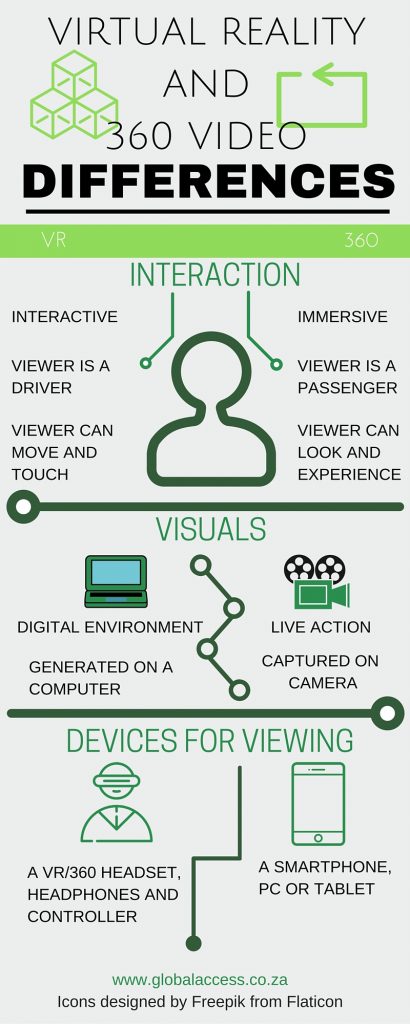360 video are a new feature that more and more companies are beginning to implement. While similar to Virtual Reality, there are still many key differences which set the two technologies apart. 360 videos allow users to view an experience in a 360 degree environment; and though its immersive, users are not able to move around within the 360 environment like they would be able to in Virtual Reality. These videos are captured on special 360 cameras and only capture real-world activity. 360 videos can be viewed on a smartphone or tablet by physically moving the device, and can also be viewed on a computer by clicking and dragging through the video. Virtual Reality, on the other hand, allows users to act in this digital 360 environment, and gives much more freedom to explore the virtual worlds. VR is interactive, allowing users to move around, touch objects, etc. and is fully digital, all content is computer-generated, so the possibilities are as great as you can imagnie. To view VR content, a VR headset is required; some devices on the market may also require headphones and a controller as well in order to further enhance the experience. 360 videos and photos are growing in popularity and more devices are being released for them to be captured, and before we know it we will see 360 photos and videos become common place.
Below is the full infographic by Global Access:




